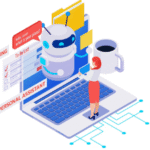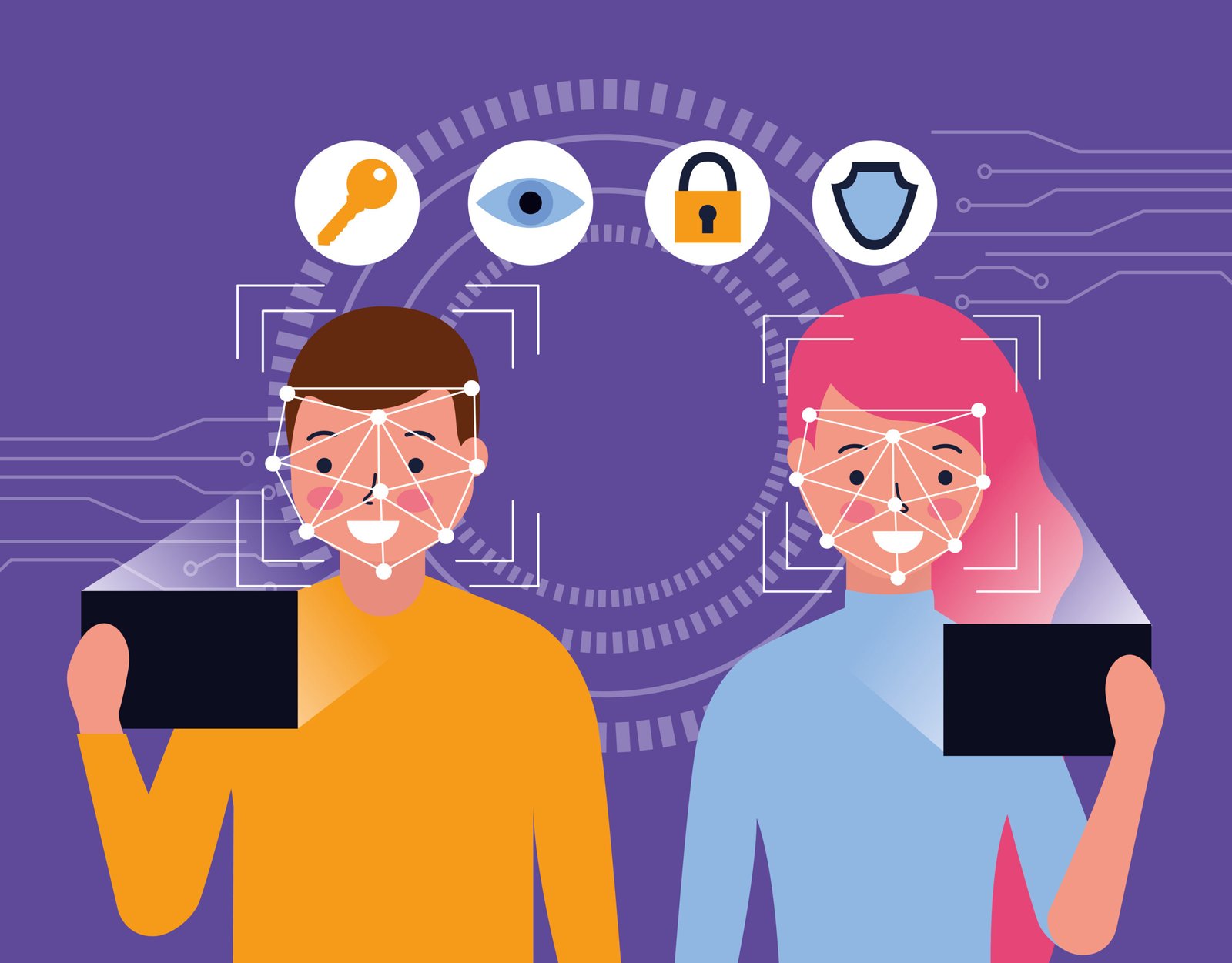Introduction: The Digital Twin Revolution
In an increasingly digitized and data-driven world, businesses are in a relentless race to enhance efficiency, cut costs, and remain agile in the face of disruption. As part of this evolution, one technology is rapidly gaining traction across B2B industries: digital twins.
Originally confined to aerospace and manufacturing, digital twins are now revolutionizing everything from supply chain management to customer service. With their ability to create real-time virtual replicas of physical assets and systems, digital twins provide insights that improve performance, reduce downtime, and transform how businesses operate at scale.
This article explores why digital twins are poised to become a cornerstone of modern B2B operations—covering definitions, benefits, use cases, implementation strategies, and a glimpse into the future.
What Is a Digital Twin?
A digital twin is a dynamic, virtual model of a physical object, system, or process. It continuously receives real-time data from sensors and devices embedded in its real-world counterpart, allowing businesses to simulate, monitor, and optimize operations.
A typical digital twin includes:
- The physical asset or system – e.g., a machine, production line, vehicle, or supply network.
- The digital model – an intelligent, data-driven replica built using CAD designs, IoT data, operational logs, and AI algorithms.
- A real-time data connection – enables two-way communication between the physical and digital environments.
Unlike traditional static models, digital twins are dynamic, learning and adapting based on real-time feedback. This makes them powerful tools for decision-making, prediction, and operational agility.
Why Digital Twins Matter in B2B Operations
Digital twins are gaining momentum because they deliver measurable improvements in efficiency, resilience, and innovation. Here’s how they’re transforming core B2B functions:
1. Accelerated Product Design and Innovation
Digital twins allow engineers and R&D teams to prototype virtually, test performance under different conditions, and refine designs without physical trials. This reduces development time, saves costs, and drives faster go-to-market cycles.
2. Predictive Maintenance and Asset Management
By constantly monitoring equipment in real-time, digital twins can identify wear-and-tear patterns, predict breakdowns before they occur, and schedule timely maintenance. This minimizes downtime, extends asset lifespan, and lowers maintenance costs.
3. Supply Chain Optimization
In supply chain management, digital twins simulate logistics networks, inventory flows, and delivery routes. They help organizations anticipate disruptions, optimize inventory levels, and enhance overall coordination across suppliers and partners.
4. Energy Efficiency and Sustainability
Digital twins simulate energy usage and emissions, helping companies reduce waste, optimize energy consumption, and meet sustainability goals. They are instrumental in achieving net-zero strategies and improving ESG performance.
5. Enhanced Customer Experiences and Service Models
Digital twins can represent not just machines, but entire customer environments. Businesses can offer proactive support, remote diagnostics, and even shift to outcome-based service models (e.g., pay-per-use or uptime guarantees), driving higher customer satisfaction.
Core Benefits of Digital Twins in B2B
Let’s explore the key advantages that digital twins offer across industries:
1. Real-Time Operational Visibility
Businesses gain a clear, real-time view of how their assets and processes are performing—enabling quicker responses to issues and better-informed decisions.
2. Reduced Downtime and Costs
By predicting failures and allowing proactive maintenance, digital twins drastically cut unplanned downtime and associated financial losses.
3. Enhanced Product Quality
Design teams can simulate stress tests, material performance, and end-user behavior to develop higher-quality, more reliable products.
4. Agile Decision-Making
Digital twins enable scenario testing and “what-if” simulations. B2B leaders can foresee outcomes before implementing changes, minimizing risk.
5. Improved Supply Chain Resilience
Simulations of different supply chain scenarios help anticipate delays, reroute deliveries, and maintain business continuity in times of disruption.
6. Better Compliance and Risk Management
With digital twins, businesses can monitor environmental factors, safety metrics, and regulatory compliance in real time, reducing legal and operational risks.

B2B Industry Use Cases
Digital twins are being adopted across a wide range of industries. Here are some compelling B2B applications:
1. Manufacturing
Digital twins simulate production lines, monitor machine health, and optimize throughput. Manufacturers use them to test factory layouts, improve worker ergonomics, and reduce energy consumption.
2. Aerospace and Defense
Aircraft engines, space shuttles, and mission-critical systems are modeled as digital twins to ensure reliability, safety, and maintenance scheduling.
3. Logistics and Transportation
Fleet operators and logistics companies use digital twins to track shipments, predict delivery times, and reroute based on traffic or weather conditions.
4. Energy and Utilities
Power plants, grids, and renewable assets like wind turbines are monitored using digital twins to optimize output, reduce downtime, and ensure grid stability.
5. Healthcare and Life Sciences
Digital twins of organs or patient profiles help medical professionals simulate treatments, tailor therapies, and improve patient outcomes.
6. Construction and Infrastructure
From smart buildings to bridges, digital twins allow simulation of wear, usage patterns, and environmental impacts to ensure safety and long-term efficiency.
How Digital Twins Work
To deploy a digital twin effectively, businesses combine several technologies:
- IoT Sensors – Capture real-time data from physical environments.
- Cloud and Edge Computing – Store and process massive data sets with low latency.
- AI and Machine Learning – Analyze patterns and make intelligent predictions.
- 3D Modeling and Simulation Tools – Create accurate digital representations.
- Data Integration Platforms – Connect ERP, CRM, and operational systems to enable a unified view.
A key element is the digital thread—a data pipeline that ensures continuous communication between systems. It stitches together data across the asset lifecycle, enabling a seamless, intelligent feedback loop.
Overcoming Challenges in Digital Twin Adoption
Despite their transformative potential, digital twins come with challenges:
1. High Initial Investment
Building digital twins requires upfront costs in sensors, platforms, and integration. However, long-term ROI often outweighs the initial expenditure.
2. Integration with Legacy Systems
Older IT infrastructure may not be compatible with modern digital twin platforms. Businesses must invest in middleware and APIs to bridge gaps.
3. Data Privacy and Security
Digital twins deal with sensitive, real-time data. Robust cybersecurity protocols are essential to protect digital assets from breaches or misuse.
4. Talent and Skills Gap
Digital twin deployment demands expertise in data science, IoT, systems engineering, and analytics. Organizations must train existing staff or hire new talent.
5. Scalability
Building a digital twin for a single asset is easy; doing so for entire facilities or networks is complex. Modular architecture and phased rollouts are key to scaling effectively.
Getting Started with Digital Twins in B2B
Here’s a step-by-step roadmap for businesses exploring digital twin adoption:
- Define the Use Case
Start with a high-impact area—e.g., machine health monitoring, predictive maintenance, or supply chain simulation. - Pilot the Solution
Build a prototype or minimum viable twin (MVT) to test feasibility, data flows, and early value. - Secure Stakeholder Buy-In
Get alignment across IT, operations, and leadership teams. Show expected ROI and risk mitigation. - Establish the Data Infrastructure
Ensure you have the necessary sensors, connectivity, and integration tools for real-time data capture and processing. - Choose the Right Platform
Select a digital twin platform that supports your industry, scale, and customization needs. - Implement AI/ML Capabilities
Enable predictive insights and scenario simulations by integrating machine learning models. - Monitor and Iterate
Set clear KPIs (e.g., downtime reduction, energy savings, delivery accuracy) and refine the twin over time based on results.
The Future of Digital Twins in B2B
Digital twins are evolving from asset-level simulations to enterprise-wide intelligence platforms. Here’s what lies ahead:
AI-Native Digital Twins
Next-gen twins will be powered by generative AI, enabling autonomous decision-making and adaptive learning.
Ecosystem Integration
Digital twins of suppliers, partners, and customers will connect into broader ecosystems—enabling collaborative forecasting, planning, and execution.
Sustainability Twins
Businesses will increasingly use digital twins to model carbon footprints, optimize resource usage, and report ESG metrics.
Immersive Environments
AR/VR and 3D visualizations will enhance interaction with digital twins—especially in design reviews, training, and remote troubleshooting.
Digital Twin-as-a-Service (DTaaS)
Cloud-based subscription models will make digital twin capabilities accessible to SMBs, not just large enterprises.
SEO Takeaways: Why This Topic Is Hot Right Now
- Search volume for keywords like “digital twins,” “predictive maintenance,” and “supply chain simulation” is rapidly increasing.
- B2B decision-makers are actively researching real-world applications and ROI examples of digital twins.
- Long-form, in-depth content like this provides strong SEO value, especially when combined with visuals, templates, and checklists.
- Businesses that establish thought leadership on digital twin strategies can attract qualified leads and differentiate their brand.
Conclusion: Embrace the Digital Twin Opportunity
Digital twins represent more than a technological leap—they are a paradigm shift in how businesses design, operate, and serve. For B2B companies, they offer a rare combination of efficiency, innovation, resilience, and customer-centricity.
By starting small, investing smartly, and scaling deliberately, organizations can harness the full potential of digital twins. In doing so, they won’t just keep up with the future—they’ll help shape it.
The era of digital twin-enabled B2B operations has arrived. Are you ready to twin your way to transformation?










